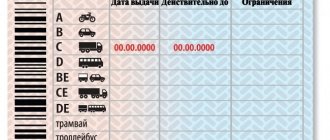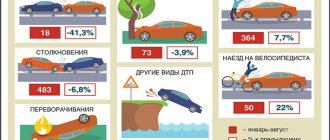There are many delivery methods, but motor vehicles are very popular. Quite often you can hear the phrase “transportation of oversized cargo”. What goods are oversized and what are their features? First of all, oversized cargo is a cargo that is difficult to transport in a standard vehicle. The parameters of such a load are: width – 2.55 m; height 4 m; length is 20 m, and special requirements are put forward for the machine. Delivery is carried out according to separate rules. Oversized items include: industrial equipment and special-purpose equipment.
Oversized cargo mainly includes equipment and industrial parts
What is oversized cargo
This is a load that exceeds the permissible dimensions from Russian Government Decree No. 272:
- 2.55 m wide,
- 4 m high,
- 12 m long.
The maximum length of the vehicle with trailer and cargo is 20 m. The cargo can extend beyond the rear dimensions by no more than 2 meters.
For trucks with isothermal bodies, such as refrigerators, the width tolerance is slightly larger - 2.6 meters.
Anything larger than these dimensions is oversized.
If the dimensions of the vehicle and trailer are larger than these, the driver is transporting oversized cargo
Nuances of oversized cargo transportation
Large cargo transportation may be allowed if certain features are met:
- the cargo does not interfere with visibility;
- there is no reduction in the stability of the equipment;
- lighting elements of transport, special signs are not covered by transported elements;
- the cargo does not pollute the surrounding environment.
Responsibility for delivery falls on the driver of the equipment. If the delivery of oversized cargo does not meet the specified conditions, the driver must immediately take a number of measures aimed at ensuring safety.
When a transported item from the rear or front extends beyond the vehicle by a meter or more, more than 0.4 m from the side, a sign with the inscription “Large cargo” is attached to the vehicle. When cargo transportation is carried out in insufficient visibility or at night, the cargo is equipped with additional lights or reflectors: white on the front; behind - red.
Delivery features also include speed. On the roadway, the vehicle speed does not exceed 60 km/h, on the bridge – 15 km/h. During transportation, the driver cannot deviate from the given route or exceed the established speed limit. He is prohibited from parking outside special places and various manipulations along the roadsides.
If a equipment malfunction is detected, traffic must be stopped immediately, as this can create an emergency situation and a threat to other road users.
Another feature of such cargo transportation is the requirements for the braking system. According to the rules, the brake pedal in a road train is installed on the tractor, and the semi-trailer must have parking brakes. In the event of a line rupture, the equipment should be equipped with a special device for automatic stopping. A road train with oversized cargo is equipped with additional anti-roll devices, and the cabin with additional mirrors for additional rear visibility. Traveling in icy conditions and when visibility is less than 100 m is completely prohibited.
The situation is more complicated when heavy oversized items are transported. This will require enhanced security measures. The first step is to obtain permission, which will specify the specific route of the equipment. If the length of the transport exceeds 30 m and the width more than 4 m, then the transportation procedure is much stricter. You should be accompanied by traffic police vehicles, otherwise the company and the driver will face a fine.
There are cases when unforeseen situations arise during the movement of vehicles and the approved route requires a change, then it is necessary to obtain permission with a changed route in the manner prescribed by law.
Strict requirements are imposed on the equipment of the road train
Rules for the transportation of oversized cargo
Sign. According to traffic regulations, a sign “Large cargo” is attached to the load if the load is wider than the side lights of the vehicle by 0.4 meters on each side, and by 1 meter in front or behind.
Striped signs are “Large Load” signs. Attach them to the extreme points of the load - this way other drivers will notice and avoid the obstacle
Restrictions. Transportation of cargo is permitted provided that it:
- does not limit the driver's visibility;
- does not complicate control and does not affect the stability of the machine;
- does not cover external lighting devices and reflectors, registration and identification marks, and does not interfere with the perception of hand signals.
Requirements for the size of oversized cargo for transportation under traffic regulations in 2020
These operations are sometimes difficult and costly and create difficult traffic conditions. The requirements for the size of oversized cargo according to traffic regulations in 2020 regulate precisely such transportation.
Size requirements according to traffic regulations
Appendix 1 to PP No. 272 indicates the maximum weight of a loaded vehicle for single vehicles and road trains, depending on the number of axles. Here in Appendix 2 is a table of maximum axle loads for trucks.
The vehicle must be in good working order and the object being transported must be securely secured. Speed restrictions also apply. At any time of the day, the speed should be no more than 60 km/h. When traveling on bridges, no more than 15 km/h.
How to obtain permission to transport oversized cargo
A permit is required if the dimensions of the vehicle and trailer exceed 20 meters in length, 4 meters in height and 2.55 meters in width. Here are the basic steps.
Pay the fee. The state fee for issuing a permit is 1600 rubles.
To write an application. In the document, describe the route and characteristics of the cargo, loading and unloading locations. Please attach a copy of the vehicle’s passport and technical requirements for cargo transportation to the application and receipt. Here is an example of filling.
If vehicles with trailers are longer than 24 meters, indicate in the application “Need for an escort vehicle.” This is a passenger car with flashing lights and bright stickers on board. It helps other road users notice large cargo from afar and take action - for example, change lanes or pull over to the side of the road. You can hire such an escort privately - type in the search “cover car Moscow”, for example. The cost is about 30 rubles/km.
Draw up a road train diagram. In the diagram, indicate the dimensions of the car with a trailer, cargo, and center distances. Appendix 3 of Order No. 258 of the Ministry of Transport contains an example of how to draw up a road train diagram.
This diagram shows axle loads. Check with your regional Roads Authority to see if you need to do this. Source: tktg.ru
Visit the local Road Administration of Rosavtodor. Submit your application in person to the Uprdor Federal Institution in your region. Federal departments are divided not by city, but by area. For example, if the cargo needs to be sent from Moscow to Nizhny Novgorod, look for the phone number and all other contacts on the website of the Federal State Institution “Uprdor Moscow - Nizhny Novgorod”.
Wait for the permit to be issued. The approval process lasts from 7 to 20 days.
Oversized cargo dimensions, traffic regulations 2020 for trucks
- two-axle vehicle from 18 t,
- three-axle vehicle from 25 t,
- four-axle vehicle from 32 t,
- three-axle road train from 28 t,
- four-axle road train from 36 t,
- five-axle road train from 40 t,
- six-axle or more road trains from 44 tons.
“Oversized cargo” sign - dimensions according to GOST
- preliminary approval of the route;
- obtaining a special permit for transportation;
- use of escort vehicles;
- in case of damage to elements of transport infrastructure, the carrier must compensate for the damage.
Any fine for improper transportation of oversized cargo may result in administrative liability for the carrier company. It is imperative that a vehicle carrying cargo, be it a gazelle or a passenger car, must have an oversized cargo transportation sign installed.
Fine for oversized cargo
Exceeding dimensions. By law, a driver can receive a fine for oversized cargo - from 1,000 rubles to deprivation of rights for six months. The amount of the fine depends on how much the permitted dimensions are exceeded:
| Exceeding dimensions | Punishment for the driver | Legal entity |
| up to 10 cm | fine up to 1500 rubles. | up to 150,000 rub. |
| 10–20 cm | up to 3500 rub. | up to 250,000 rub. |
| 20-50 cm | up to 5500 rub. or deprivation of rights for up to 3 months | up to 400,000 rub. |
| more than 50 cm | up to 10,000 rub. or deprivation of rights for up to six months | up to 500,000 rub. |
Violation of signs. Sometimes bridges, communications or other buildings in the city can interfere with a truck even with the permitted dimensions. In this case, a sign indicating the permitted dimensions of the vehicle is installed in front of the obstacle or on it itself. Let's look at what signs there are.
Sign 3.13 “Height limitation”. This sign is often installed in front of a tunnel under railroad tracks or a utility line above a road.
Sign 3.14 “Width limitation”. The sign means that a tractor with a wide blade or a grader will not pass.
Sign 3.15 “Length limitation”. The sign is needed to prevent a long truck from getting stuck in a narrow street when turning.
The fine for non-compliance with the requirements of these signs is 500 rubles.
Fines
For violation of the procedure for transporting oversized items, administrative liability is provided. If the parameters for transporting goods are exceeded by 10 cm or more, then in 2020 the following types of penalties apply:
- for a transport driver: fine from 1500 to 2000 rubles. or deprivation of a driver’s license for up to 4 months;
- for individuals: fine 10,000-15,000 rubles;
- for legal entities: fine 250-400 thousand rubles.
The vehicle is subject to detention.
Oversized cargo transportation is a rather responsible and complex undertaking. The matter should be approached with all responsibility, so as not to receive a fine or harm someone. Guided by established regulations and adhering to the rules, then all risks can be minimized.
Remember
- The loaded vehicle must not exceed 20 meters in length, 4 meters in width, and 2.55 in height. Anything larger is oversized cargo.
- To transport oversized cargo, permission is obtained from the Regional Road Administration. And also hang special signs.
- If the road train is longer than 24 meters, a cover vehicle is required. With bright stickers and flashing lights, it will inform other drivers in advance that a large truck is approaching.
- The fine for transporting oversized items is from 1000 rubles to deprivation of rights for six months.
- You can appeal the inspector's decision within the first 10 days from the date of the decision.
- To reduce the fine by half, pay it within the first 20 days from the date of the decision.
How to transport oversized cargo - what traffic regulations say in 2020
For road transportation of oversized cargo across the territory of Russia, standard requirements and acceptable standards have been established. Improper organization and exceeding the permitted parameters during transportation can cause accidents on the roads.
This is interesting: Transition to the summer uniform of the Ministry of Internal Affairs 2020 Samara
Transportation rules
The sign can be purchased ready-made or made independently, taking into account the dimensions determined by GOST (R12.4.026-2001). The sign is made of reflective materials in the shape of a square, which depicts inclined white and red stripes 5 cm wide. The size of the sides of the sign itself is 40 cm. The given parameters are provided for by GOST and are mandatory.
cargoes have not been normatively regulated in the legislation of the Russian Federation. The rules for transportation by road, approved by Decree of the Government of the Russian Federation of April 15, 2011 No. 272, determined that the transportation of dangerous goods by road in urban, suburban and intercity traffic is carried out in accordance with the requirements established in this European Agreement,” says the message from the traffic police press center. The administrative regulations, which come into force next year, will solve a number of problems:
What kind of cargo is considered oversized?
Oversized cargo is considered to be those cargoes whose dimensions (weight/volume/physical) exceed the values established in the country's traffic regulations as permissible for transportation.
There are oversized vehicles for passenger cars and trucks.
According to the traffic rules of the Russian Federation:
· protrudes from both rear/front more than the maximum 1000 mm ;
· protrudes from the side (both sides or one) over 400 mm (exceeds the edges of the car headlights).
Dimensions
A loaded car must be marked with a sign as “Large cargo” so that other drivers and road users can see it.
Additionally, if you drive at night (at dusk) or in conditions when visibility is reduced, you need to install a small reflective element in front . Or a white lantern. The rear part of the vehicle should be equipped with reflective elements/red light source.
A citizen can choose any option. The main thing is to indicate what it is transporting and other drivers have seen the size of the object and its outline.
These requirements apply to standard situations when it is necessary to transport large items, but for a common purpose. Then the owner’s main task is to highlight them and secure them securely. Drive carefully, adhering to speed limits. Perhaps drive slower than usual if things are heavy.
You can read about the contract of carriage and its essential features, and also download it in a separate article.
Regulatory acts for oversized cargo in the Russian Federation and comments to them
Traffic regulations on transportation of oversized goods
The traffic rules of the Russian Federation set out only a few regulations for the transportation of oversized cargo: the presence of flashing lights, identification signs is mentioned here, and speed parameters for movement and overhang are indicated. Other standards, in accordance with traffic rules, are given in special rules.
Federal law and rules for the transportation of goods by road
The main legal regulations related to the transportation of oversized goods in the Russian Federation are declared in Chapter 5, Art. 31 of Federal Law No. 257-FZ . They say that:
- transportation of CTG on roads requires obtaining a special permit;
- the procedure and algorithm for obtaining permission is approved by the government of the Russian Federation;
- when developing a route, it is necessary to coordinate and obtain approval from road owners;
- in case of damage to roads, the amount calculated by the owners must be compensated.
Based on regulatory legal act No. 257-FZ, the Government approved Resolution No. 272 of April 15, 2011, which provides definitions of concepts that are especially important for oversize workers:
- Heavy cargo;
- Large cargo;
- Divisible cargo.
The appendices to the Rules contain standards, expressed in numerical terms, regulating the concept of “oversized cargo” .
Federal law on international transportation of oversized goods
Federal Law No. 127-FZ dated July 24, 1998, which defines the basic rules for the transportation of oversized cargo in international traffic, provides for:
- Detention of a vehicle crossing the border without special permission;
- A ban on interregional transportation by a vehicle with foreign registration.
Order No. 258 - rules for issuing permits
Order No. 258 dated July 24, 2012 defines all procedural formalities that must be completed in the process of obtaining a special permit for the transportation of oversized goods. It regulates:
- appearance of the document;
- its information content;
- application procedure – responsible body, content, necessary attachments;
- conditions for accepting a completed application and acceptable reasons for refusal;
- the procedure by which the application must be considered and agreed upon;
- specifics of coordinating the transportation of heavy cargo;
- deadlines for obtaining a permit;
- the procedure for issuing a completed permit or refusing to receive it.
Order No. 107 - registration of permits by government agencies
If order No. 258 contains procedural nuances for obtaining special permits, relating primarily to the actions of the carrier, then the order of the Ministry of Transport No. 107 dated March 28, 2013 regulates the algorithm of actions of the government body responsible for issuing such permits.
It installs:
- a complete list of documents provided by the carrier;
- acceptable justifications for refusal to issue a permit;
- the rate of the state duty charged;
- deadlines for procedural actions (registration, registration);
- a list of requirements that premises must meet for receiving applications, processing and issuing permits;
- the procedure for filing complaints related to the service and their consideration.
Order No. 7 - ensuring the safety of transportation of oversized items
Order No. 7 of January 15, 2014, approved by the Ministry of Transport on July 1, 2014, contains standards for ensuring the safe transportation of oversized items and defines:
- concept of divisible cargo;
- features of organizing escort of oversized cargo: starting from what parameters it is necessary and the specifics of its equipment;
- conditions requiring the development of a traffic management project and the rules for its execution.
Resolution No. 12 - compensation for damage
Government Decree No. 12 of 01/09/2014, which came into force on January 1, 2020, provides a fundamental formula for calculating damage caused by the transportation of heavy cargo. Specific figures help determine additional tables that show rates for the federal districts of the Russian Federation, taking into account damage to axial loads and total mass.
Resolution No. 125 - weight and dimensional control
By whom and how should the vehicle weighing procedure be carried out when transporting oversized cargo, the permissible error and other nuances are contained in Government Decree No. 125 of 04/27/2011.
Order No. 211 - traffic restrictions
On August 12, 2011, the Ministry of Transport approved Order No. 211, outlining the procedure for introducing restrictions on the movement of various cargo vehicles on public roads (including the spring season, the so-called “ thaw ”) - the authorized bodies, the validity period of the restrictions and exceptions to this rule.
What kind of large cargo do we transport?
Oversized and heavy cargo for personal use and business. Our clients include manufacturing, mining and mechanical engineering enterprises, trading companies, and individual entrepreneurs.
| Oversized transportation for business | |
|
|
| Oversized transportation for individuals | |
|
|











